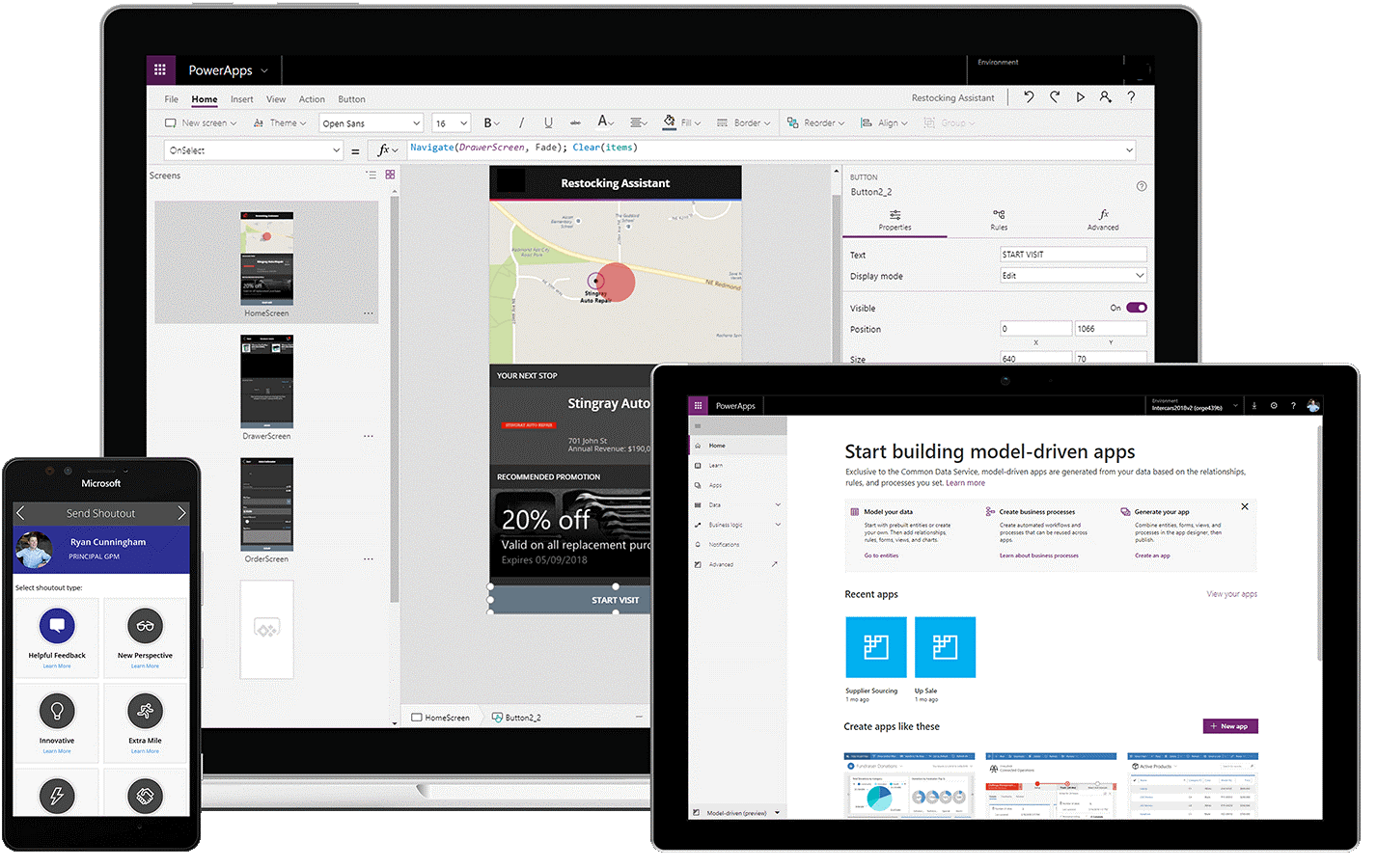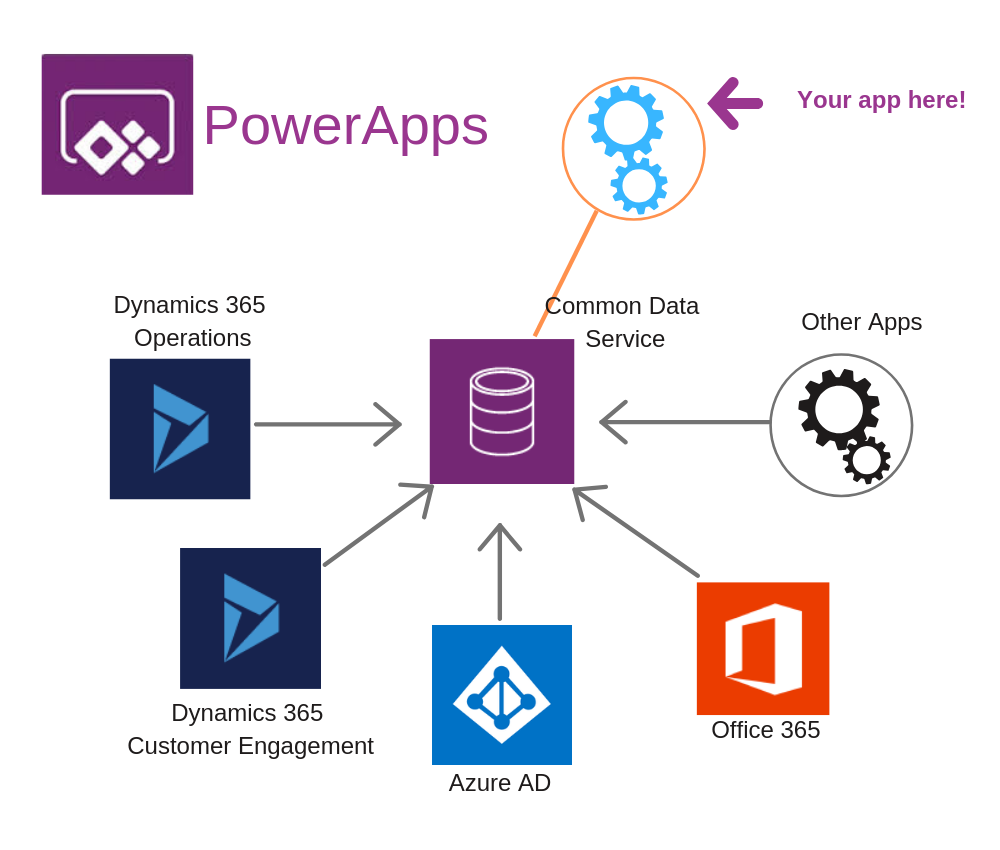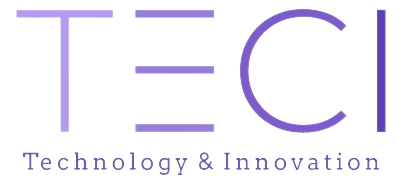Microsoft Power Apps
Microsoft Power Apps is a low-code development platform designed for building custom business applications. With Power Apps, users can create custom applications without having to write code, making it accessible to users with limited programming experience. The platform includes a visual designer, a set of pre-built templates and components, and connectors to various data sources. Power Apps can be used to build a variety of applications, such as employee-facing apps, customer-facing apps, and internal productivity tools. It is part of the larger Microsoft Power Platform, which also includes Power BI for business intelligence and Power Automate for workflow automation.

Types of Apps to Build with Microsoft Power Apps
TECI is a major technology service provider that provides a variety of solutions to assist organizations in achieving their digital transformation objectives. Microsoft Power Apps, a low-code platform that allows enterprises to develop unique business apps without substantial coding knowledge, is one of the primary solutions we provide.
Power Apps Use Cases
Workflow management
Custom workflows may be created using a drag-and-drop workflow editor.
Pre-made templates for common workflows.
Emails and alerts relating to workflow.
Workflow scheduling.
Dashboards in real time show process status, progress, due dates, and so forth.
Workflow optimization (e.g., workflows by type, complexity, average completion time).
Workflow management with mobile devices.
Create a pricing quotation
Customers were guided through the ordering and purchase process.
AI-powered price computation for customizable items.
Product price and discounting data is updated in real time.
Validation and authorisation of sales.
Quote with a single click.
Document creator for automated document generation (e.g., proposals, custom quotes, engineering documents, contracts).
Project management
Project planning and management.
Project management (tasks, stages, milestones, etc.).
Tracking and distributing resources (people, assets, money, etc.).
Collaboration within the project team.
Monitoring the performance of the project team.
Reporting (goals achieved, resource consumption, etc.).
Scheduling and booking administration
Making appointments.
Creating and revising employee schedules.
Reservations for accommodation, vehicles, and equipment, among other things.
Making changes to and canceling appointments and bookings.
Notifications concerning an appointment/booking/schedule are routed to the appropriate people.
Power Apps Integrations

Power Apps: Key Features
- App creator with drag-and-drop functionality. An easy-to-use graphical app editor for creating code-free apps from the beginning.
- Templates. Canvas and model-driven app templates (e.g., Cost Calculator, To-Do List, Book a Hotel, Contacts, Product Showcase) and gateway templates (e.g., community, customer self-service, employee self-service, partner portal).
- Automation of work processes. Developing and automating business process flows for a single app or across several apps.
- Framework for Power Applications components (for pro developers). Expanding the capabilities of Power Apps by developing custom code components for canvas and model-driven apps to improve user experience in terms of forms, views, dashboards, and other features.
- App surveillance. Monitoring apps for bugs, sluggish performance, and other concerns as they are being built or published.
- Reporting and analytics. Dashboards and data on app usage, performance, and other topics are available.
- Connectors. 200+ pre-built and bespoke connectors for integrating Power Apps-created business apps with Microsoft products (SharePoint, Office 365, OneDrive, Excel Online, Dynamics 365), third-party platforms and tools (e.g., SAP, Oracle, Salesforce), and social media (e.g., Twitter).
- Data gateway installed on-premises. To retain databases and other data sources on-premises and to transport on-premises data rapidly and securely to Power Apps.
- Authentication with many factors. A password and a code from an email or text message are two examples of data protection layers.
- Versioning. Tracking application versions and related data (e.g., dates of app update, users who made modifications), allowing for reverting to any prior app version if necessary.
- Permissions for users. Specifying who may use and edit each program.
- The audit trail. Monitoring user behaviors such as app creation, publication, and deletion, as well as app version restoration. The audit data must be kept for 90 days.
- Compliance with regulations. Observance of government and industry regulations (e.g., HIPAA, SOX, GDPR, GLBA).
- AI algorithms. Key phrase extraction, language identification, sentiment analysis, text translation, business card reader, text recognition, and receipt processing are all pre-built models. Prediction, form processing, and object identification are all custom models. Pre-built and customized models for category categorization and entity extraction are available.
- Data collection. Text and visual information may be extracted quickly using a camera or from existing digitized photos and documents.

